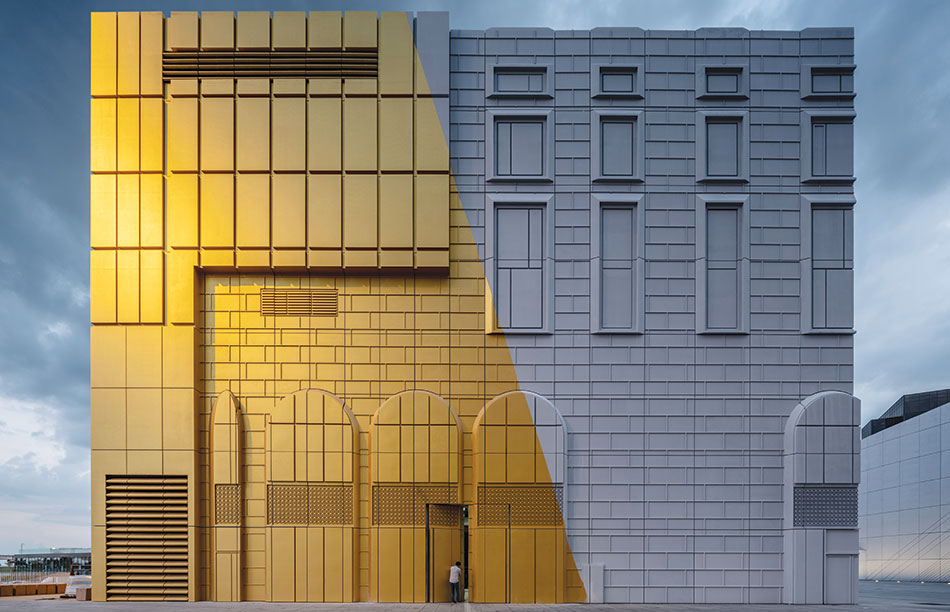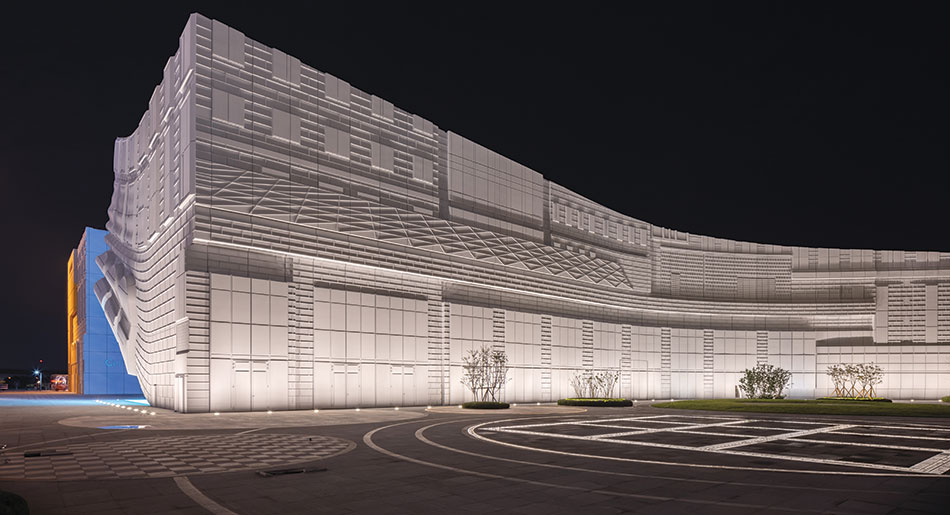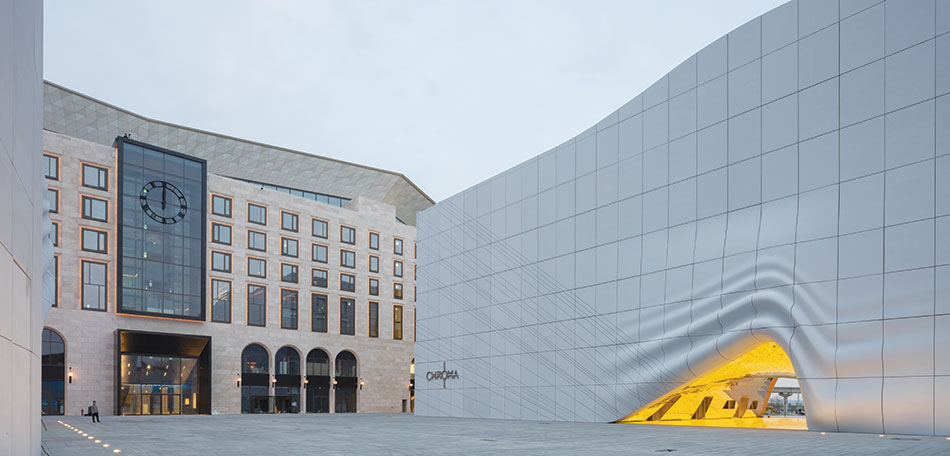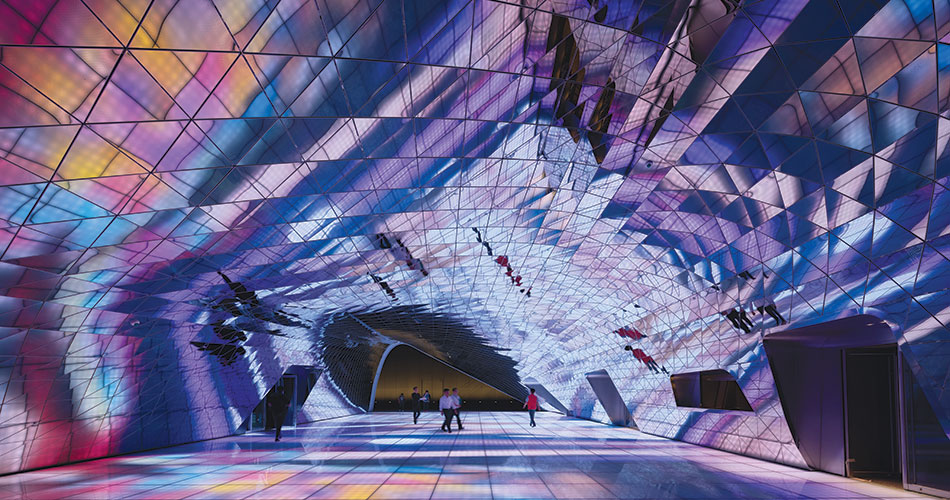
Fact File
Location: Incheon, Seoul, South Korea
Year: 2015+
Client: Paradise Segasammy Co., Ltd.
Program: 3,600m2 entertainment centre to include a theme park and 6,200m2 nightclub
Architect: MVRDV
Principal-in-charge: Winy Maas
Partner: Wenchian Shi
Design Team: María López Calleja with Daehee Suk, Xiaoting Chen, Kyosuk Lee, Guang Ruey Tan, Stavros Gargaretas, Mafalda Rangel, and Dong Min Lee
Photography: Ossip van Duivenbode
Copyright: MVRDV 2018 (Winy Maas, Jacob van Rijs, Nathalie de Vries)
Co-Architect: GANSAM Architects & Partners, South Korea
Facade Consultant: VS-A Group Ltd
Panelization Consultant: WITHWORKS
GFRC: Techwall
Lighting: L’Observatoire International
Images: © Ossip van Duivenbode

The Imprint, a 2-building complex near Seoul’s Incheon Airport, features a nightclub in one building and an indoor theme park in the other. It is part of the larger Paradise City complex of 6 buildings, which will provide a full suite of entertainment and hotels. The twin concrete windowless monolithic forms have three key design elements: imprints of the façade features of surrounding buildings, lifted entrances, and a golden entrance spot covering one corner of the nightclub building.

The challenge was to design an expressive façade that connects with its surroundings even though it has no windows. The design achieves this by projecting the façades of the surrounding buildings in the complex, which are ‘draped’ over the simple building forms and plazas like a shadow, and ‘imprinted’ as a relief pattern onto the façades.
To achieve this, the façade is constructed of glass-fibre reinforced concrete panels. As many of the 3,869 panels are unique. The construction required moulds to be individually produced using MVRDV’s 3D modelling files from the design phase. Once installed, these panels were painted white to emphasise the relief in the design.

The golden spot is the project’s most obvious and attention-grabbing element. The golden colour is achieved simply by using gold paint instead of white and is reinforced by the lighting of the facades at night: while most of the façade is lit from below, the gold spot is highlighted from above. The entrances, where the façades are lifted like a curtain to reveal mirrored ceilings and glass media floors, exude a sense of the excitement happening inside.















